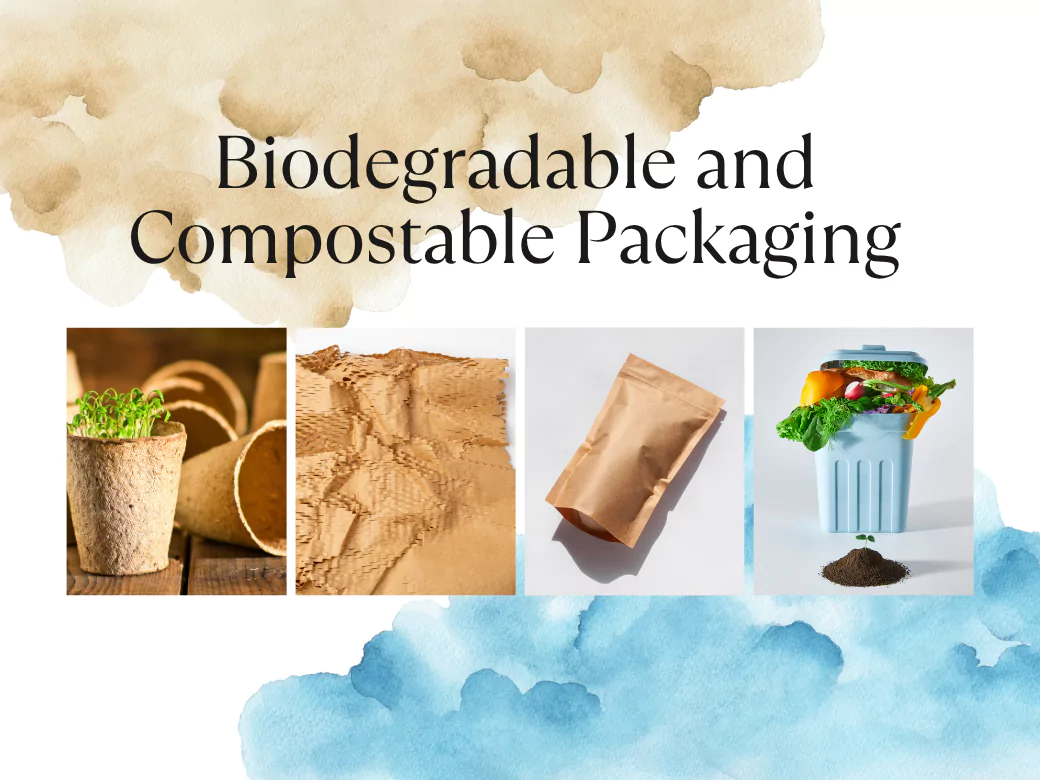The sustainable packaging industry has seen tremendous innovation in recent years, particularly in biodegradable and compostable packaging components. As brands and consumers demand alternatives to traditional plastic, new materials and technologies are reshaping the landscape. But are we finally at a point where compostable and biodegradable packaging can deliver both performance and sustainability? Let’s take a look at some of the most exciting advances in this space.
- Next-Gen Bioplastics: Beyond PLA & PHA
For years, polylactic acid (PLA) and polyhydroxyalkanoates (PHA) have dominated the compostable packaging market. While they offer an alternative to petroleum-based plastics, they have limitations, particularly when it comes to composting infrastructure and end-of-life breakdown.
Today, newer bio-based polymers are entering the market, offering better compostability and functionality. Some exciting innovations include:
- Seaweed-based bioplastics that break down naturally in marine environments, addressing concerns over plastic pollution in waterways.
- Mushroom mycelium packaging, which provides a biodegradable alternative to styrofoam for protective packaging.
- Cellulose-based films mimic plastic’s barrier properties while fully degrading in industrial or even home composting conditions.
- Home-Compostable Films & Flexible Packaging
One of the biggest hurdles for compostable packaging has been flexible packaging, think pouches, wraps, and sachets. Many biodegradable films require industrial composting facilities, which are not widely available. However, home-compostable flexible films have made significant progress:
- New starch-based films break down in backyard compost bins in weeks, not months.
- Water-soluble coatings are replacing petroleum-based laminates, making compostable films more versatile.
- Barrier-enhanced compostable pouches now offer better oxygen and moisture protection, making them viable for food and nutraceutical packaging.
- Molded Fiber Packaging: Stronger & More Versatile
Molded fiber has been around for a while (think egg cartons), but recent advancements have turned it into a high-performance packaging material that rivals plastic.
- Advanced fiber blends now offer superior strength, allowing for thinner, lighter packaging.
- Water and grease-resistant coatings (without PFAS!) make molded fiber suitable for food service and personal care applications.
- 3D-printed molds allow for customized, branded fiber packaging with precise shapes and textures.
- Compostable Adhesives & Labels: Closing the Loop
One of the biggest challenges in sustainable packaging is non-compostable adhesives, inks, and labels. Even if the packaging itself is compostable, traditional adhesives and labels can prevent it from breaking down properly. Fortunately, new innovations are solving this issue:
- Compostable pressure-sensitive adhesives (PSAs) ensure that compostable packaging doesn’t leave behind microplastics.
- Algae- and plant-based inks provide vibrant, food-safe printing without harming composting processes.
- Fully compostable labels and security seals mean that the entire package, not just the main material, can break down as intended.
- The Rise of Certification & Infrastructure Expansion
Advancements in materials are only part of the equation. A key shift we’re seeing is increased composting infrastructure and certification programs to ensure that these materials actually get disposed of properly.
- More composting facilities are expanding their acceptance of certified compostable packaging.
- Certification programs like TÜV OK Compost Home and BPI are becoming stricter, ensuring products truly break down as advertised.
- Brands are educating consumers on proper disposal, ensuring compostable packaging doesn’t end up contaminating recycling streams.
What’s Next?
While biodegradable and compostable packaging has come a long way, challenges remain, particularly around scalability, cost, and end-of-life disposal infrastructure. The good news? Innovations in material science, better certification processes, and growing consumer demand are pushing the industry forward.
For brands looking to integrate compostable or biodegradable packaging, the key is to:
- Choose materials that align with real-world disposal options
- Ensure compostable packaging is truly compostable, with proper testing and certification
- Educate customers on how to dispose of packaging properly
At NuGen Packaging, we’re committed to staying ahead of the curve in sustainable packaging solutions. If your brand is exploring compostable packaging options, let’s talk about how we can help you navigate this evolving landscape.

